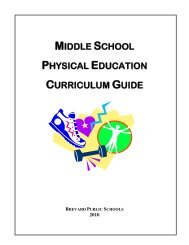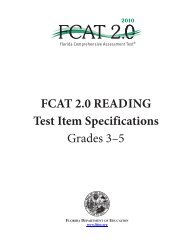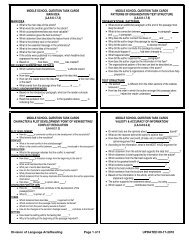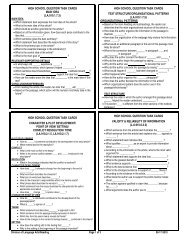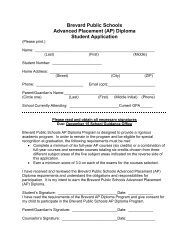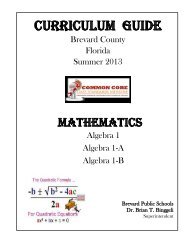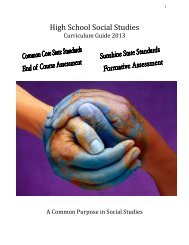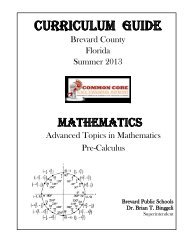Science Research Program Guide - Secondary Programs Home ...
Science Research Program Guide - Secondary Programs Home ...
Science Research Program Guide - Secondary Programs Home ...
Create successful ePaper yourself
Turn your PDF publications into a flip-book with our unique Google optimized e-Paper software.
• The Venn Diagrams are diagrams using overlapping circles (or any shape) to show<br />
relationships among subjects.<br />
The Line Graph usually consists of an independent and dependent variable. The independent<br />
variable is usually plotted along the x-axis, the dependent variable along the y-axis. The<br />
independent variable is defined as a parameter, or measurable property, that is not affected by<br />
the dependent variable. The variance of the dependent variable, however, may be influenced by<br />
the independent variable.<br />
General <strong>Guide</strong>lines for Constructing Graphs<br />
� Label all axes by clearly defining the variables and their units of measurement.<br />
� Define the plotting symbols in a legend.<br />
� Generally, plot no more than four lines on the same graph. Use different types of lines<br />
(solid, dashed, alternating solid/dashed, etc…) Do not use different colors, since some<br />
people are color-blind and such graphs cannot be copied without destroying the<br />
distinguishing characteristics of the different lines.<br />
� In the title, note where the data that was used to plot the points can be found in the report.<br />
� The magnitude of the increments used to plot the quantities of the variables must be<br />
carefully chosen in order to convey an accurate picture of the possible relationships<br />
between the variables. This will result in a graph proportioned to focus on the important<br />
parts of the curve.<br />
� Show data breaks by drawing two vertical lines (the first one shorter than the second) on the<br />
axis and on the corresponding point on the curve. Increment magnitudes may be changed<br />
after the data break in order to better focus on the important parts of the curve.<br />
� Three-dimensional graphs may be used when the interdependency or correlations of three<br />
variables are to be investigated. Such graphs may entail one dependent and two<br />
independent variables or one independent and two dependent variables.<br />
Discussion<br />
This is by far the most important and time consuming section of the research paper in that it<br />
reflects and documents the student’s thinking process. The prose style must be organized to<br />
enable the reader to follow the logic and interpretation of the results of the experiment. The<br />
text must also acknowledge the tentativeness of the interpretations. Remember, being limited<br />
by our perceptions, we can never prove anything. The student should not use the word “prove”<br />
but instead should use “the evidence supports…” or “it appears to be…” All data and<br />
observations must be discussed using alternate explanations. Credibility will be lost if the<br />
reader discovers possible reasons for the results that were not considered by the research<br />
student.<br />
The tone must be objective rather than subjective, thus avoiding phrases such as “I feel…” or<br />
“In my opinion.” Use clear, concise, and efficient language mechanics. This section will make<br />
frequent references to tables, graphs, and observations in order to support the student’s<br />
interpretations and theories. Never introduce new data or observations not previously<br />
documented in the appropriate sections as this may suggest that you are selectively withholding<br />
information. The text may periodically be augmented by other written symbolism such as<br />
13



